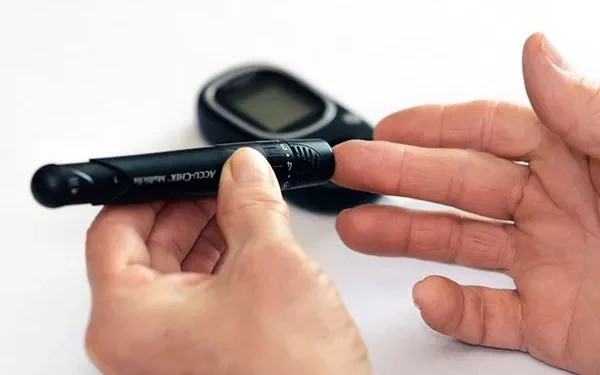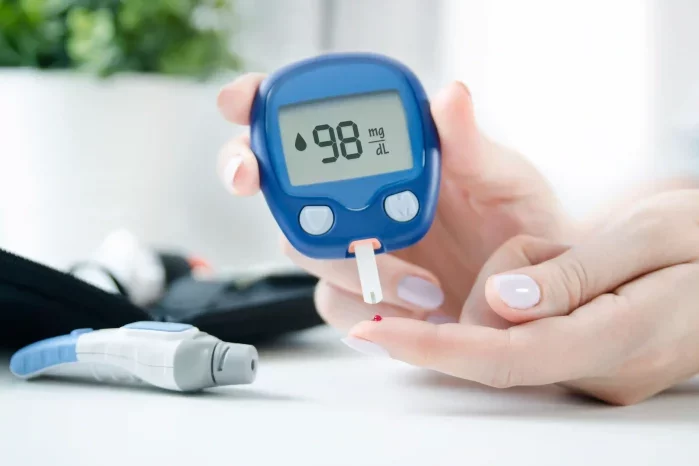Monitoring blood sugar levels is a crucial aspect of diabetes management. For individuals living with diabetes, regular monitoring provides valuable insights into how well their treatment plan is working, helps identify trends and patterns in blood sugar levels, and guides adjustments in medication, diet, and lifestyle. However, the frequency of blood sugar testing can vary depending on individual factors such as the type of diabetes, treatment regimen, overall health status, and personal goals. This article explores the importance of blood sugar monitoring, factors influencing testing frequency, guidelines for different diabetes types, optimal times to check blood sugar, interpreting results, and technological advancements in blood glucose monitoring.
Understanding Blood Sugar Monitoring
Blood sugar (glucose) monitoring involves measuring the concentration of glucose in your bloodstream. For people with diabetes, this is typically done using a blood glucose meter—a small, portable device that analyzes a drop of blood obtained by pricking the fingertip or alternate sites such as the forearm or palm. Continuous glucose monitoring (CGM) systems, which provide real-time glucose readings throughout the day, are also increasingly used, offering continuous insights into glucose levels and trends.
Importance of Blood Sugar Monitoring
Monitoring blood sugar levels serves several important purposes in diabetes management:
- Assessment of Treatment Effectiveness: Regular testing helps assess how well medications (such as insulin or oral medications), diet, and physical activity are controlling blood sugar levels.
- Early Detection of High or Low Blood Sugar Levels: Prompt identification of hyperglycemia (high blood sugar) or hypoglycemia (low blood sugar) allows for timely intervention to prevent complications.
- Understanding Patterns and Trends: Monitoring helps identify patterns in blood sugar levels throughout the day, such as post-meal spikes or overnight lows, which can inform adjustments in treatment plans.
- Support for Lifestyle Modifications: Monitoring provides feedback on the impact of food choices, physical activity, stress, and other factors on blood sugar levels, empowering individuals to make informed lifestyle adjustments.
Factors Influencing Frequency of Blood Sugar Testing
The frequency of blood sugar testing varies based on several factors, including:
- Type of Diabetes: Whether you have type 1 diabetes, type 2 diabetes, gestational diabetes, or another form of diabetes influences how often you need to check your blood sugar.
- Treatment Regimen: Individuals using insulin typically require more frequent testing than those managing their diabetes with oral medications or lifestyle changes alone.
- Health Status: Coexisting medical conditions, such as cardiovascular disease or kidney disease, may necessitate more frequent monitoring.
- Pregnancy: Pregnant women with gestational diabetes require close monitoring to ensure optimal blood sugar control for both maternal and fetal health.
- Individual Goals and Preferences: Some individuals may prefer more frequent testing to gain better control and understanding of their diabetes management.
Guidelines for Blood Sugar Monitoring by Diabetes Type
Type 1 Diabetes
For individuals with type 1 diabetes, who require insulin therapy for survival, frequent blood sugar monitoring is essential to manage insulin doses effectively and prevent complications. The American Diabetes Association (ADA) and other organizations recommend:
- Multiple Daily Checks: Testing blood sugar before meals, snacks, and bedtime, as well as occasionally during the night, depending on insulin regimen and individual needs.
- Continuous Glucose Monitoring (CGM): Using CGM systems to monitor glucose levels continuously throughout the day and night, providing real-time data and alerts for proactive management.
Type 2 Diabetes
The frequency of blood sugar testing for individuals with type 2 diabetes depends on the treatment plan and overall health status. Guidelines typically recommend:
- Daily Testing: Especially if using insulin or medications that can cause hypoglycemia, such as sulfonylureas or insulin secretagogues.
- Less Frequent Testing: For individuals managing diabetes with lifestyle modifications alone, oral medications that do not cause hypoglycemia, or well-controlled diabetes without significant fluctuations.
Gestational Diabetes
Pregnant women with gestational diabetes require close monitoring to maintain optimal blood sugar levels for maternal and fetal health:
- Frequent Testing: Testing fasting and post-meal blood sugar levels to ensure tight control and prevent complications during pregnancy.
- Consultation with Healthcare Providers: Regular follow-ups with obstetricians, endocrinologists, or diabetes educators to adjust treatment as pregnancy progresses.
Other Forms of Diabetes
Monitoring requirements may vary for less common forms of diabetes, such as maturity-onset diabetes of the young (MODY) or secondary diabetes due to other medical conditions or medications. Individualized recommendations are crucial based on treatment goals and healthcare provider guidance.
Optimal Times to Check Blood Sugar Levels
Fasting Blood Sugar
Fasting blood sugar levels, measured in the morning before eating or drinking anything (except water), provide a baseline indication of overnight blood sugar control. This test helps assess the effectiveness of nighttime insulin or medication doses.
Pre-Meal Blood Sugar
Checking blood sugar levels before meals provides insights into baseline levels and helps adjust mealtime insulin doses or medications. This test helps prevent post-meal spikes and ensures optimal pre-meal glucose levels.
Post-Meal Blood Sugar
Testing blood sugar levels 1-2 hours after meals helps evaluate how well the body processes carbohydrates from food. This test identifies post-meal glucose spikes and guides adjustments in meal composition, portion sizes, or insulin doses.
Bedtime Blood Sugar
Checking blood sugar levels before bedtime helps ensure stable overnight glucose levels and prevents nocturnal hypoglycemia or hyperglycemia. This test is crucial for individuals using basal insulin or managing nighttime fluctuations.
Exercise-Related Testing
Monitoring blood sugar levels before, during, and after exercise helps adjust carbohydrate intake, insulin doses, or other medications to prevent exercise-induced fluctuations in blood sugar levels.
Periodic Testing
In addition to daily testing, periodic testing at different times of the day—such as after snacks, during periods of illness or stress, or when trying new foods or medications—provides a comprehensive view of blood sugar control throughout various scenarios.
Interpreting Blood Sugar Results
Understanding and interpreting blood sugar results are essential for effective diabetes management:
- Target Ranges: Individualized blood sugar targets are based on age, health status, diabetes type, and treatment goals. Common targets include fasting blood sugar levels of 80-130 mg/dL (4.4-7.2 mmol/L) and post-meal levels below 180 mg/dL (10 mmol/L).
- Patterns and Trends: Identifying patterns, such as consistent high or low readings at specific times, helps pinpoint factors contributing to blood sugar fluctuations (e.g., diet, medication timing, stress).
- Monitoring Logs: Keeping a detailed log of blood sugar readings, meals, physical activity, medication doses, and other relevant factors helps healthcare providers and individuals track progress, identify trends, and make informed adjustments.
Technological Advances in Blood Glucose Monitoring
Continuous Glucose Monitoring (CGM) Systems
CGM systems provide real-time glucose readings throughout the day and night, offering insights into glucose trends, patterns, and fluctuations. Key features include:
- Sensor Technology: Small, wearable sensors inserted under the skin to measure interstitial glucose levels.
- Wireless Connectivity: Data transmission to a receiver, smartphone, or insulin pump for real-time monitoring and alerts.
- Data Analysis: Software applications (apps) for viewing trends, setting alerts for high or low glucose levels, and sharing data with healthcare providers for remote monitoring and adjustments.
Flash Glucose Monitoring
Flash glucose monitoring systems, such as the FreeStyle Libre, provide on-demand glucose readings with a swipe of a reader device over a sensor worn on the skin. These systems offer convenience and immediate feedback on glucose levels without the need for routine fingerstick testing.
Blood Glucose Meters
Traditional blood glucose meters remain a staple in diabetes management, offering portable, accurate, and easy-to-use devices for measuring blood sugar levels using a small drop of blood obtained by fingertip pricking.
Integrated Diabetes Management Platforms
Integrated platforms combine CGM data, insulin pump functionality, and glucose monitoring apps into comprehensive systems for personalized diabetes management. These platforms aim to streamline data analysis, decision-making, and treatment adjustments for improved glucose control and quality of life.
Factors Affecting Blood Glucose Meter Accuracy
- Meter Calibration: Proper calibration of blood glucose meters according to manufacturer instructions ensures accurate readings.
- Strip Storage and Handling: Storing test strips in their original containers, away from heat, moisture, or direct sunlight, maintains strip integrity and accuracy.
- User Technique: Following correct fingerstick technique, using fresh lancets, and applying an adequate blood sample size (as specified by the meter) optimize accuracy.
Challenges and Considerations
Cost and Insurance Coverage
Financial considerations, including the cost of blood glucose meters, test strips, CGM systems, and related supplies, may impact access to continuous monitoring technologies and frequency of testing.
Emotional and Psychological Impact
Managing diabetes, including frequent blood sugar testing, may impact emotional well-being and quality of life. Support from healthcare providers, diabetes educators, and peer support groups can help address emotional challenges and promote coping strategies.
Patient Education and Empowerment
Education on proper blood sugar monitoring techniques, interpretation of results, lifestyle modifications, and diabetes self-management empowers individuals to take an active role in their health and achieve optimal blood sugar control.
Healthcare Provider Collaboration
Collaboration with healthcare providers, including endocrinologists, primary care physicians, diabetes educators, and dietitians, ensures personalized diabetes management plans, regular follow-ups, and adjustments based on evolving health needs and goals.
See also: What’s the Best Accu-Chek Meter
Conclusion
In conclusion, the frequency of blood sugar testing varies based on diabetes type, treatment regimen, individual health status, and personal preferences. Regular monitoring, using blood glucose meters or continuous glucose monitoring systems, provides essential insights into blood sugar control, facilitates timely adjustments in treatment plans, and supports optimal diabetes management. Advances in technology, such as CGM systems and integrated diabetes management platforms, offer new opportunities for real-time monitoring, data analysis, and personalized care. By integrating regular blood sugar monitoring with comprehensive diabetes management strategies, individuals with diabetes can achieve better glucose control, reduce the risk of complications, and enhance overall quality of life.
Through ongoing education, collaboration with healthcare providers, and adherence to personalized monitoring plans, individuals with diabetes can navigate their diabetes journey with confidence and achieve long-term health and well-being.
Related topics:
How is Blood Glucose Monitored in Hospitals?


























